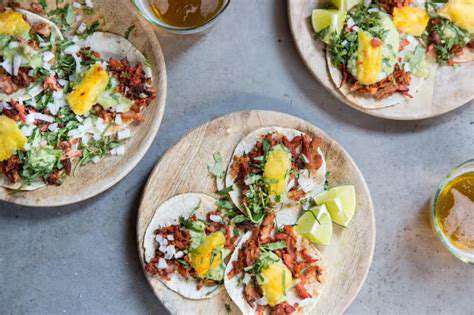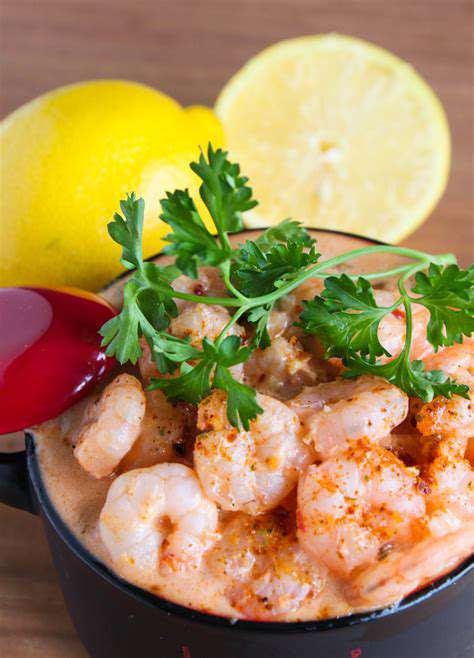Food Culture in Mexico: A Journey Through Flavors

Beyond the Tourist Traps: Unveiling Authentic Mexican Cuisine
While the vibrant street tacos and colorful margaritas are undeniably alluring, venturing beyond the typical tourist hotspots reveals a treasure trove of authentic Mexican culinary experiences. Digging deeper into the diverse regional cuisines unlocks a world of flavors and textures that transcend the simple, familiar dishes often showcased in popular destinations. This exploration extends far beyond the readily available tourist fare, offering a chance to immerse oneself in the heart of Mexican culinary traditions.
From the smoky chipotle peppers of Oaxaca to the rich mole sauces of Puebla, each region boasts a unique set of ingredients and cooking methods. Exploring these regional specialties allows diners to appreciate the profound cultural significance food plays in Mexican life, a journey beyond the superficial and into the heart of the community.
The Significance of Fresh Ingredients: A Cornerstone of Mexican Cooking
A defining characteristic of authentic Mexican cuisine is its reliance on fresh, seasonal ingredients. This emphasis on the bounty of the local harvest creates dishes that are not only flavorful but also deeply connected to the land and its people. Farmers' markets and local producers are integral to the culinary landscape, highlighting the community's dedication to sustainability and quality.
The use of fresh herbs, spices, and locally sourced produce is a fundamental aspect of this culinary tradition. These ingredients, often organically grown, bring a vibrant freshness and complexity to the dishes, showcasing the seasonality and abundance of Mexican agriculture.
Beyond the Plate: The Social Aspect of Mexican Dining
The act of eating is often a social occasion in Mexico. Family gatherings, celebrations, and even casual encounters frequently revolve around shared meals, fostering connections and strengthening community bonds. Dining out in Mexico often involves more than just satisfying hunger; it's an opportunity to connect with the local culture and its people.
The communal aspect of meals in Mexico is not limited to family gatherings; it extends to restaurants and street food stalls alike. Sharing plates and engaging in conversation with fellow diners adds an extra layer of richness to the experience, creating a warm and inviting atmosphere.
The Role of Spices and Herbs: A Symphony of Flavors
Mexican cuisine is renowned for its vibrant use of spices and herbs, creating a complex and layered flavor profile that is both tantalizing and satisfying. From the fiery heat of chili peppers to the aromatic notes of cilantro and oregano, each ingredient plays a crucial role in shaping the final dish.
The skillful blending of spices and herbs creates a culinary symphony, where each component contributes to the overall experience. Exploring the unique combinations used in different regions reveals a deeper understanding of the cultural nuances embedded within Mexican gastronomy.
Exploring Regional Variations: A Culinary Tapestry
Mexican cuisine is a tapestry woven from diverse regional threads, each with its own unique character and flavor profile. From the coastal seafood dishes of Baja California to the hearty stews of the highlands, the variations are as diverse as the landscapes themselves.
Exploring these regional variations is crucial for a complete understanding of Mexican gastronomy. Each region has its own unique culinary traditions, showcasing the diversity and richness of the country's cultural heritage. This exploration allows diners to appreciate the profound connection between Mexican cuisine and its diverse geographical regions.
Collaborative projects, by their very nature, foster innovation and creative problem-solving. Bringing together diverse perspectives and skill sets allows teams to tackle complex challenges from multiple angles. This dynamic exchange of ideas often leads to breakthroughs that individual efforts might miss entirely. The synergistic effect of collaboration fuels a constant stream of fresh insights and solutions. The pooled knowledge and experience create a powerful engine for progress.

Read more about Food Culture in Mexico: A Journey Through Flavors
Hot Recommendations
- Traditional Foods for Day of the Dead
- Food Etiquette in Italy: Pasta Rules!
- Best Family Friendly Restaurants with Play Areas in [City]
- Review: The Best [Specific Dessert] Place in [City]
- Top Ice Cream Parlors in [City]
- Traditional Foods for Halloween
- The History of the Potato in Ireland
- Best Vegan Pizza Joints in [City] [2025]
- Best Bakeries for Sourdough Bread in [City]
- Food Culture in Argentina: Asado and Wine



![Best Knife Sets for Your Kitchen [2025]](/static/images/28/2025-05/HandleErgonomics3AComfortandControl.jpg)

![Review: [Specific Cuisine] Restaurant Experience in [City]](/static/images/28/2025-05/FinalThoughts3AAHighlyRecommendedDiningDestination.jpg)
![Review: The [Specific Brand] Electric Mixer](/static/images/28/2025-06/Performance3AMixingLiquidsandDoughs.jpg)




